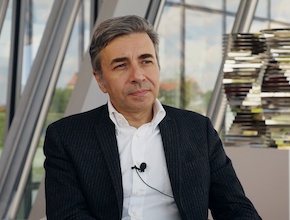The use of noninvasive ventilation in asthma exacerbations is often discussed but rarely applied in daily practice. Which patients may benefit from this intervention?
Andreas Freitag: We actually have a similar problem [in Canada]. The fortunate thing now is that when you look at the vast majority of patients with asthma, we have much fewer presentations to the emergency room, in-patient hospitalization, and the intensive care unit. This has changed dramatically in my career, over the course of the last 25 years. Asthma admissions were very common and that seems to be less so, with better treatments on our patients’ basis.
Having said that, if the patients present, most of the time they will present if they have severe asthma, status asthmaticus. They will usually have eucapnic hypoxemic respiratory failure – in other words, they are breathing very hard, very fast, clearly fatiguing – if we do not turn it around quickly, then the patients may obviously require intubation and formal mechanical ventilation. I think most of us have been very afraid to use noninvasive mechanical ventilation because of the concerns that you are providing positive pressure ventilation to patients who have got airflow obstruction or are profoundly hyperinflated; people have a feeling or thought that we are going to make things worse. That is not actually true from a physiologic perspective. As I said, there have been small studies that have demonstrated a marked improvement in terms of reduction of breathlessness and improvement of lung function.
Who would I use it in and when would I think about it? Let’s say you are giving the patients nebulized therapies – you are giving them oxygen, you might be using heliox, as an example, to reduce airway resistance and hopefully improve flow in and out. But if all those things are failing and you are thinking in the back of your mind, “the patient is failing and they are not responding to initial managements”, think about noninvasive mechanical ventilation – early, not late. It is always better to think about things early. Why? Because if you can alleviate airflow obstruction and you can offload the respiratory muscles, you have got a much better chance of the patients not winding up being intubated or ventilated. We do not have a whole lot of evidence or experience for that, but if you are thinking, “this patient has got to be admitted to an intensive care unit,” you should be thinking: noninvasive mechanical ventilation, sooner as opposed to later.
 English
English
 Español
Español
 українська
українська










